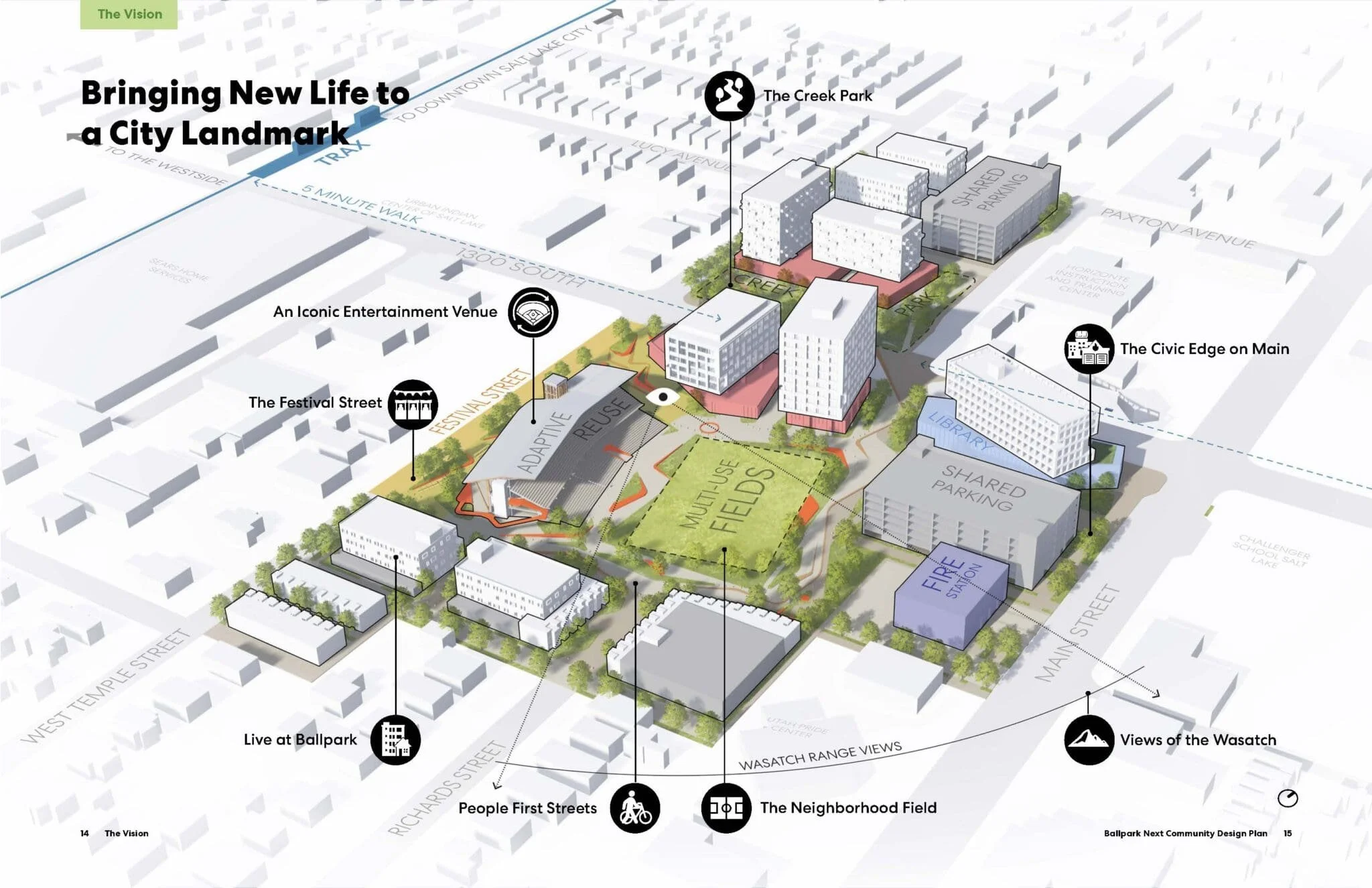Seize the Daylight
Authored by Bryan Fryer
Source: Landscape Architect Magazine
An article highlighting the steps and planning process which led to the construction of the Three Creeks Confluence. The park opens July 9th, 2021!
Seven major tributaries drain the canyons of the Wasatch Mountains east of Salt Lake City and empty into the Jordan River. As urbanization spread throughout the valley, these creeks were diverted and buried in culverts for flood control and development. Now, an effort to daylight portions of three of the creeks and restore a connection to the Jordan River is being realized in Salt Lake City’s Glendale neighborhood.
Three Creeks Confluence Park was envisioned in 2014 by a group of students at the University of Utah’s College of Architecture + Planning. The project exposes 200 linear feet of previously enclosed stream, which carries water from Emigration, Parleys, and Red Butte Creeks into the Jordan River. Brian Tonetti was one of the original students and is now the executive director of The Seven Canyons Trust, a nonprofit group formed to implement the students’ vision. “We received an Outstanding Achievement Award in the student category from the Utah chapter of the American Planning Association, and we just thought, we need to do something with this,” Tonetti says.
The park occupies approximately one acre on the east bank of the Jordan River where previously a city street dead-ended. Running beneath the street, the culvert carrying the creek water discharges into the Jordan at the end of the roadway. Tonetti says this particular site was “A great place to start. The city already owned most of the land, and it was a very degraded site that just happened to be where these creeks emptied into the Jordan.”
The students presented the plan to the city council in 2015 and received $75,000 to further develop the project and conduct community outreach. Tyler Murdock, a project manager with Salt Lake City’s Public Lands Division, says the project fit well into the city’s master plan for investment in west side neighborhoods. He said at the time it was presented to the city the student group had “a good, rough conceptual design” for the site. The city engaged the services of BIO-WEST, an environmental planning and landscape architecture firm based in Logan, Utah which further developed the plan and, alongside members of the Seven Canyons Trust, conducted community outreach.
Murdock says that besides a few “dedicated urban fishermen,” most of the community members were unaware of this stretch of waterfront. “It is on a dead-end street. There is an auto repair shop there that had encroached into the city right-of-way. Unless you walked back there on purpose, you would never know the river and the confluence was there,” Murdock says. The city purchased and demolished an abandoned house north of the site to provide more space for the park and also vacated the right-of-way. Plans for the park were refined and eventually received a combined $3 million from Salt Lake City and County for construction.
Christopher Sands, ASLA, a principal and senior landscape architect with BIO-WEST, says the plan creates a more natural, terraced shoreline, as well as a delta where the cool water from the streams will mix with the warmer water of the Jordan River. The park includes picnic areas, a play area, and access for kayaks and canoes. Two bridges cross the site, one connecting to the Jordan River Trail and the other serving as a fishing bridge to accommodate anglers. (A fishing pier in the channel was ruled out because of wide fluctuations in the water flows and deep, unsteady sedimentary soil.)
Connecting to the trail will also provide access to other community spaces, such as the elementary school and community center located a few blocks away. And plans are under way to purchase a second piece of property to the north for future expansion. “This is only 200 feet of daylighting,” Tonetti says. “We hope this can show the benefits of daylighting. We hope this is just one step on our mission of uncovering streams in the Salt Lake Valley.”




